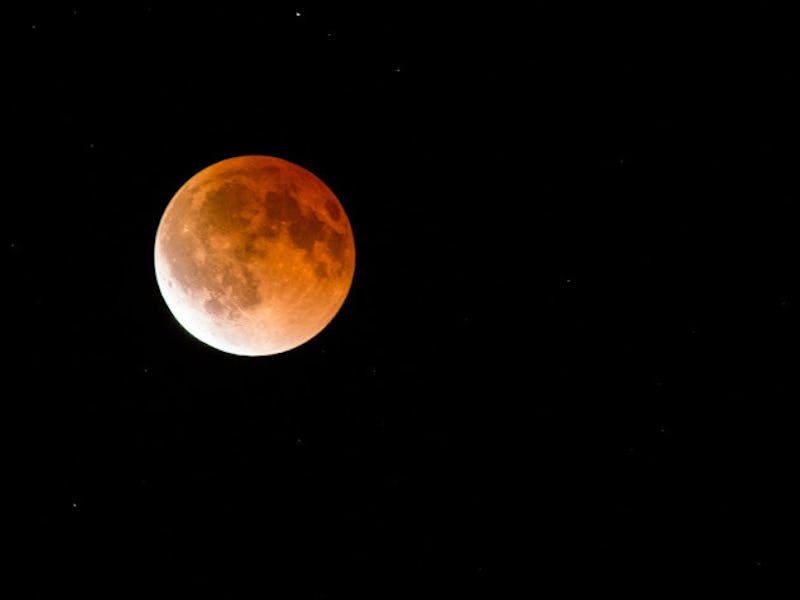The Science of the Supermoon Lunar Eclipse
Perfect orbital position + another perfect orbital position = terrifying red circle in the sky

This Sunday’s supermoon lunar eclipse will be a rare event — one that hasn’t occurred since 1982. Two separate orbital phenomena will coincide, causing the moon to appear spectacularly large and violently red. (And despite what you might have heard, it will not be the harbinger of the end of the world.) For those unfamiliar with how and why this will all go down, here’s a primer on the why and how of the thing.
A lunar eclipse happens when the Earth casts a shadow on the moon. The Earth doesn’t throw shade (literal or figuratively) over the entirety of the moon. Some sunlight actually gets around the edges and hits the moon, causing it to glow visibly. This weekend, you’ll notice the moon blushing. That’s because the light reaching the moon is going through our atmosphere, which only lets long-wavelength light pass. This is compounded by excessive amounts of dust and particles in the air, so you’ll see a more extreme version of the phenomenon if you live in a smoggy or polluted area (assuming you can see anything at all).
Lunar eclipses occur at a rate of one or two a year, making them rarer than the 2.4 average annual solar eclipses. But lunar eclipses still don’t get the fanfare that a disappearing sun gets because we’re used to a bit of waxing and waning. But things change when the moon gets more noticeable, which brings us to the supermoon portion of this explainer.
The moon will be reaching that time of year in its orbit where it’s closer to us than ever — 222,000 miles away instead of the typical 240,000. The supermoon this year will appear 14 percent larger and 30 percent brighter in the sky than the average 2015. It will be its best self. Throw in an hour-long eclipse, and you have a blood-red moon that’s sure to scare the few unfortunate folks who don’t know it’s coming.
If you want to see it in the sky your best bet will be between 10:00 and 11:00 p.m. EDT on the 27th. Perfect for east coasters, a little rotten for West Coast inhabitants. The peak eclipse point will happen at 10:47 p.m., so our friends on the Pacific might still be able to catch a nice view closer to 8:00 p.m. PDT.